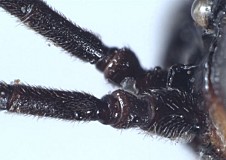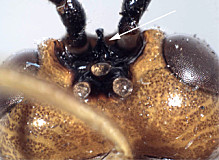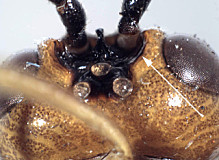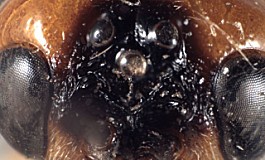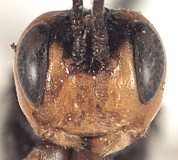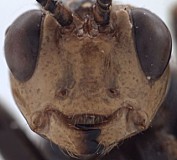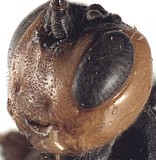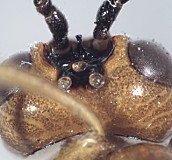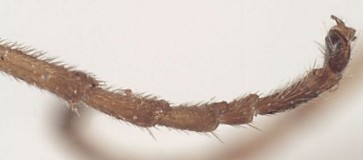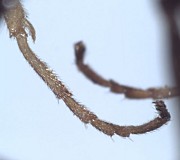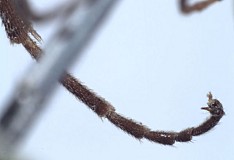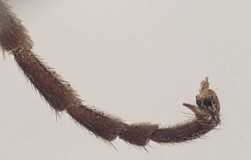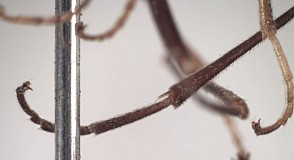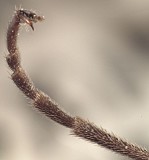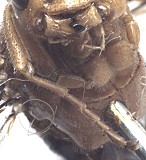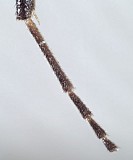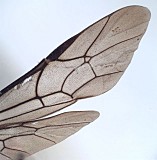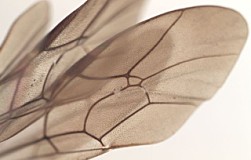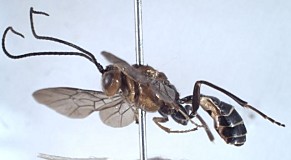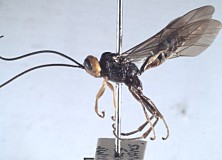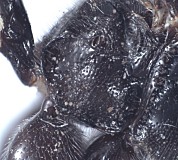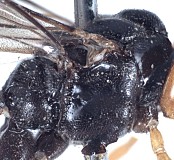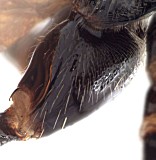Westwoodia gauldi Wharton and Roeder, 2008
Westwoodiini
Ctenopelmatinae
Distinguished from all other species of Westwoodia by the combination of a densely punctate face, tall interantennal flange, strongly elevated median mesoscutal lobe, and sharply margined frontal depression. This species is most similar to some mainland populations of W. ruficeps in which the interantennal flange is not hemispherical in outline. In all populations of W. ruficeps, however, the tarsi, especially on the fore leg of the female, are very short and broad.
There are no specimens currently determined for this OTU, or those specimens determined for this OTU are not yet mappable.
label = hand-written, black ink on white paper, 3 lines as follows:
BLACK MT
6 XII 29
J. W. EVANS.
Paratypes
1♂, NSW, Tubrabucca, 10-23.i.1948, R.T.M.P. & A.N.B. (Victoria Museum); 1♂, VICTORIA, Launchins Place, 13.i.1913 (?), F.F.S. (Victoria Museum).
Actual paratype labels:
1) single label = printed, black ink on white paper, 3 lines as follows:
Tubrabucca, N.S.W.
Jan. 10-23, 1948
R.T.M.P. & A.N.B.
2) 2 labels
top label = hand-written, black ink on white paper, 3 lines as follows:
Launchins
Place. Vict
F.F.S. 13.1.13 (date hard to read, this is my best interpretation)
2nd label = printed, black ink on white paper, 2 lines as follows:
Ex. Coll.
Nat. Mus.
This material is based upon work supported by the National Science Foundation under Grant Number DEB 0328922 with REU supplement 0616851.
Any opinions, findings, and conclusions or recommendations expressed in this material are those of the author(s) and do not necessarily reflect the views of the National Science Foundation.

